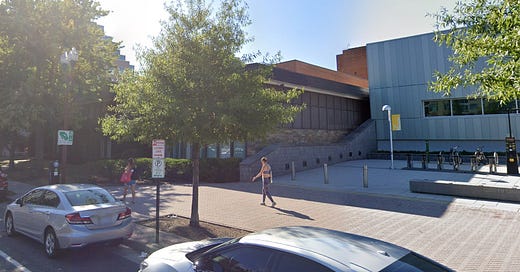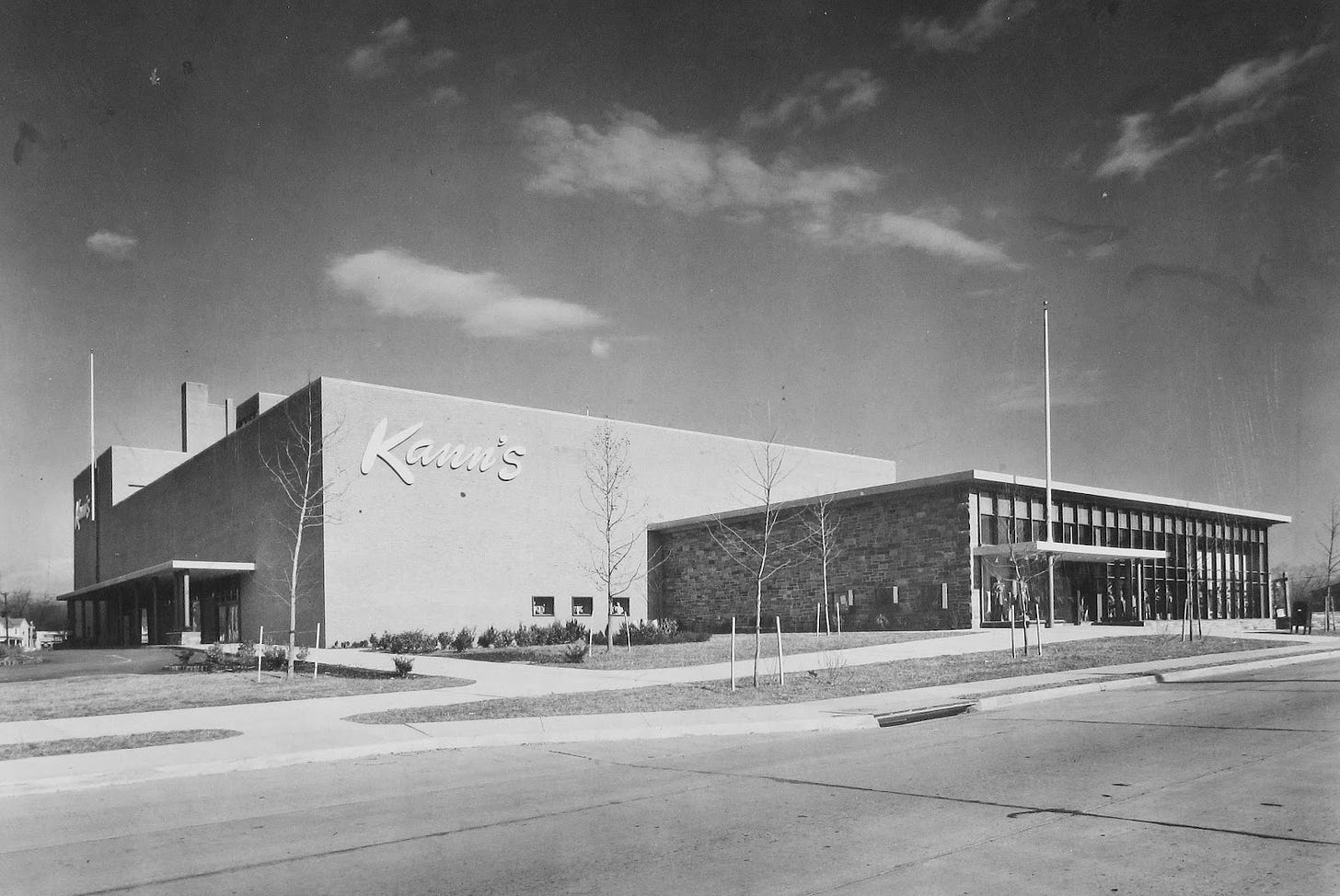What Do You Think You're Looking At? #7
A fun illustrated series on the unexpected lives of commercial buildings
If you’re from Arlington, Virginia or the area, you may know this one. The building was demolished earlier this year, and there isn’t (wasn’t) a great angle to get a photo of it or a screenshot from Google Street View. But here it is. For several decades up until its demise, it was the home of George Mason University’s law school.
Here’s the satellite view; it’s the building in the middle with the red marker.
This isn’t much to go off, but here’s a hint: this building was originally surrounded by quite a bit of parking—when it was built right around 1950.
Any thoughts?
Here’s the same building, pretty much externally unchanged, in 1953. The low part in the front is what you’re mostly seeing in the first picture, and it faces towards the highway in the second picture.
Kann’s was a Washington, D.C.-area department store, which opened a branch here in Virginia’s D.C. suburbs. Since 1975, when the aging department store failed, GMU has held the building, and it went into service as an academic building a few years later. Very little of the interior probably survived intact, but the outside, as noted, remained almost identical.
ARLnow, in an article on the building’s demolition, included this bit: “In an alumni remembrance from last year, many former students recounted how this building was where they bought clothes as a kid and earned their law degree as an adult.”
The old urban department stores were somewhat traditionally urban buildings. Their suburban counterparts, while grander than large suburban stores today (the Virginia Kann’s had a Brazilian monkey exhibit to entertain children, among other “amenities”) were freestanding big-box stores, or anchors for strip plazas or early indoor malls.
This 1970s conversion from suburban department store to school is probably one of the first examples of adaptive reuse for a big-box store in America. That building lasted 70 years, and housed two completely different uses.
In the 1970s, big-box stores were less common, and such adaptive reuse is impossible for all the vacant ones today. But this one is both a historical curiosity and an example of how long and complex the lives of ordinary buildings can be.






